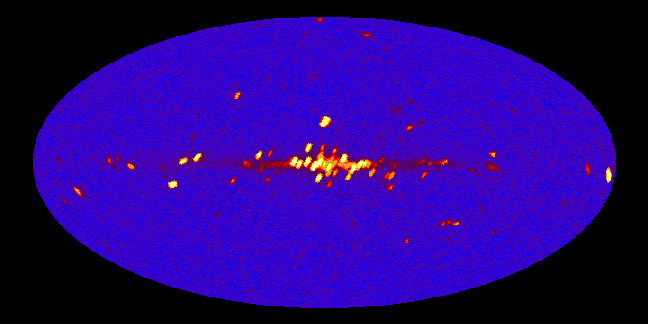Astronomy Picture of the Day
Discover the cosmos! Each day we feature a different image or photograph of our fascinating universe, along with a brief explanation written by a professional astronomer.
January 2, 1996

The X-Ray Sky
Credit:
NASA,
HEAO-1,
Boldt (GSFC) and
Garmire (Cal Tech/PSU),
Skyview,
Allen,
Jahoda, Whitlock


